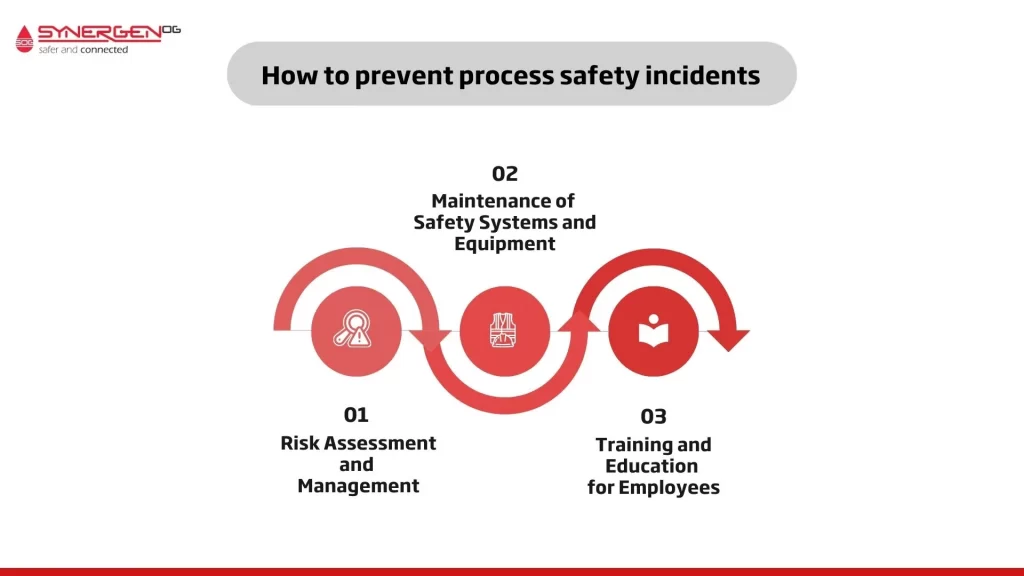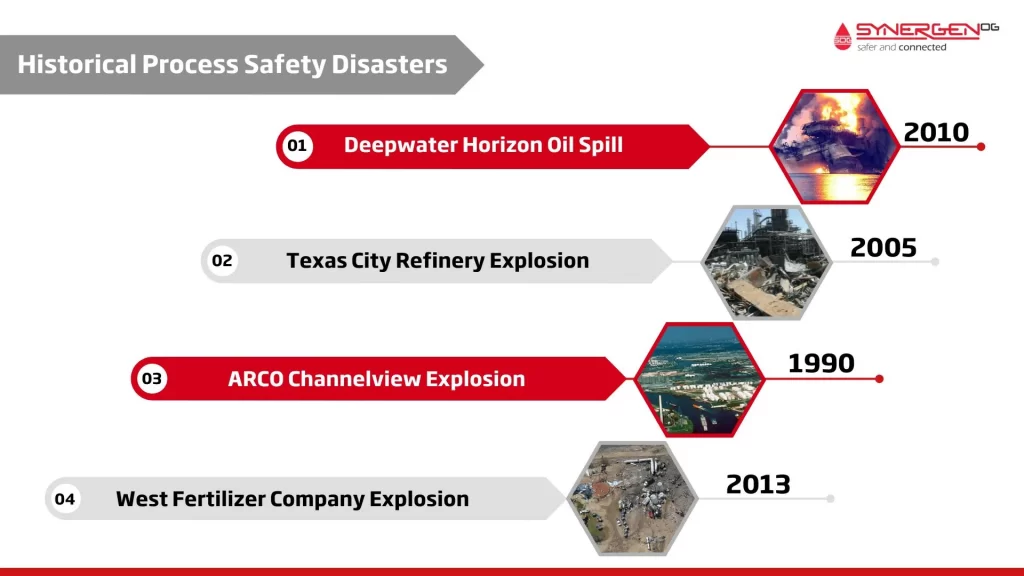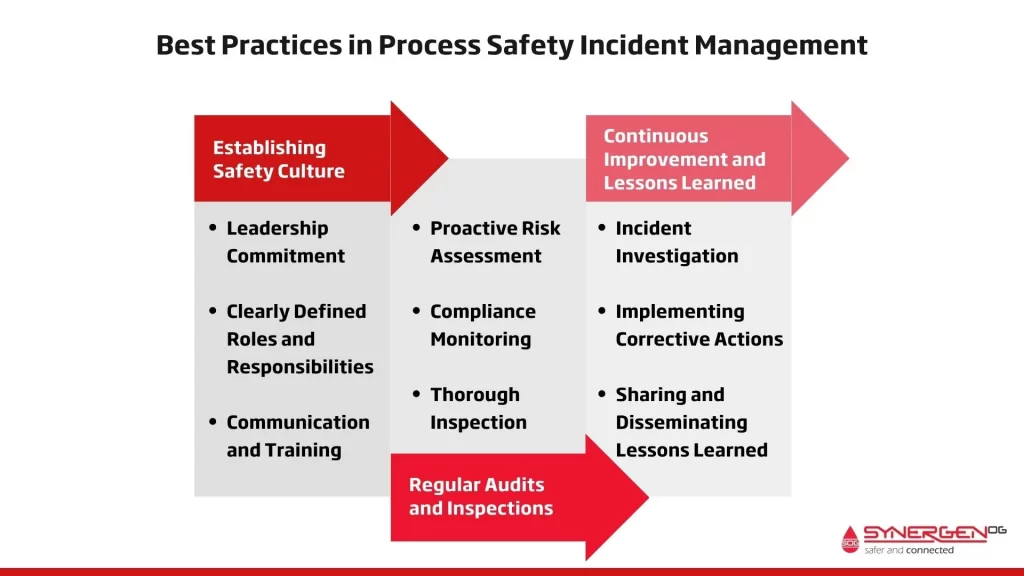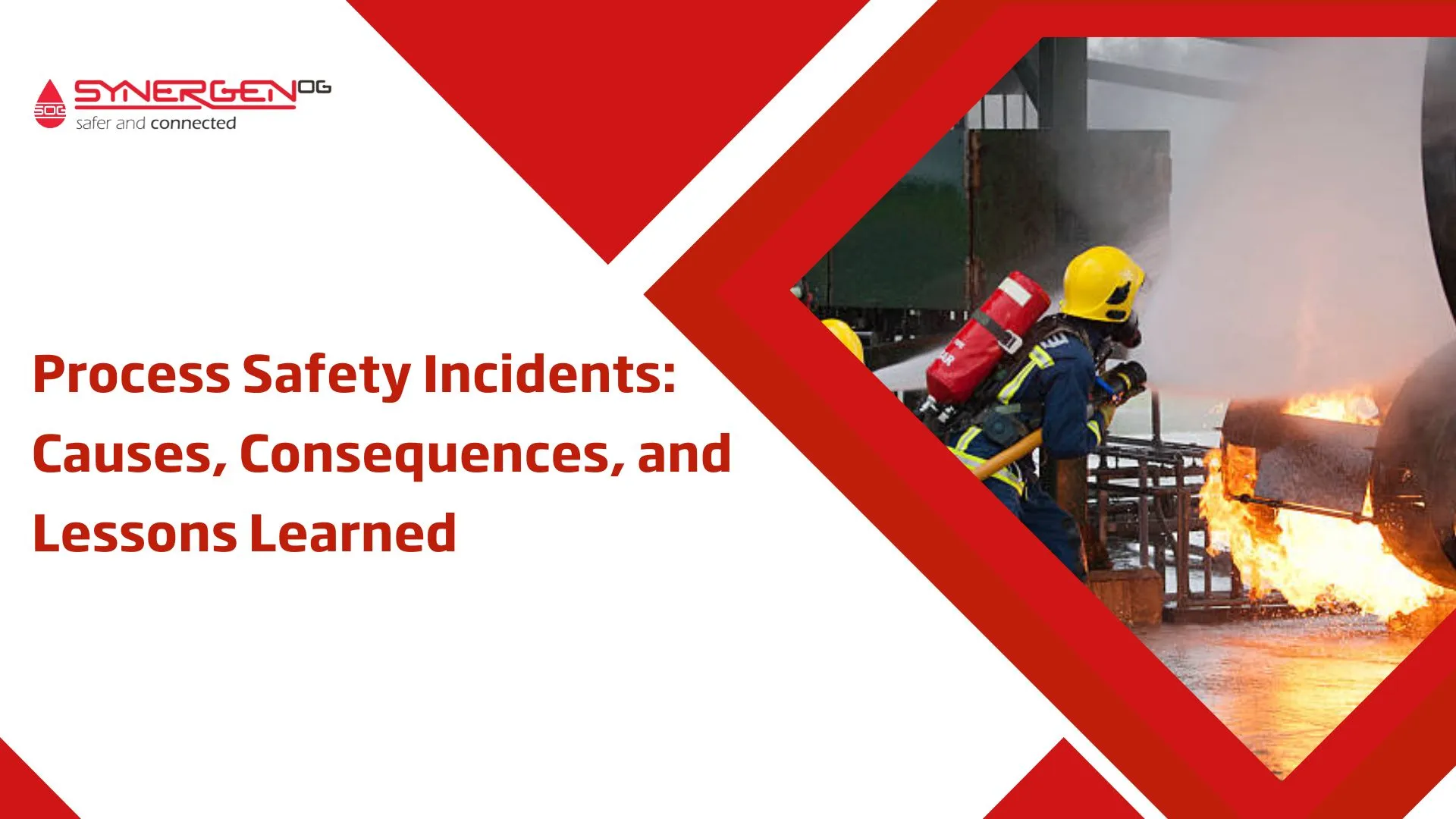| Summary: The article provides an overview of process safety incidents (PSIs) in the chemical and petrochemical industries. It explores the causes of PSIs, preventative measures, response protocols, and lessons learned from historical incidents. The article emphasizes the importance of risk assessment, maintenance of safety systems, employee training, emergency response, crisis management, incident investigation, and continuous improvement. It aims to raise awareness about process safety and help organizations mitigate risks and improve safety practices. |
Process safety incidents (PSIs) are a major contributor to fatalities, injuries, and significant property damage in the chemical and petrochemical industries. The U.S. Chemical Safety Board has reported that between 2006 and 2010, there were more than 1,000 PSIs resulting in over 50 deaths and 1,200 injuries at U.S. refineries alone.
There have been many more tragic examples over the years, including the 2005 BP Texas City explosion that killed 15 workers and injured 180 more people.
Process safety incidents are still occurring at an alarming rate. These safety incidents occur during every phase of operations: startup, shutdown, process upsets and malfunctions, maintenance activities (e.g., cleaning), product transfer and handling (e.g., loading/unloading equipment), and emergency response activities (e.g., firefighting).
In this article, let’s look into the causes, consequences and lessons learned from process safety incidents.
Understanding Process Safety Incidents
– Definition of Process Safety Incident
Process safety incidents are “any unplanned event that can cause a release of a hazardous material into the surrounding area outside the boundaries of its intended operation.” The term “incident” is used so that incidents can differentiate from accidents, which have the potential to cause injury or death.
A PSI is any event that results in or has the potential to result in death or serious physical injury, substantial release of a regulated substance, or substantial property damage.
Process safety incidents can also be called process hazards, process accidents, process upsets and other similar terms.
– Common Causes of Process Safety Incidents
The most common causes of process safety incidents are human error, equipment malfunctioning and failure to follow proper procedures. Here is the complete list,
- Lack of management commitment to process safety
- Inadequate training in process safety for employees
- Insufficient process hazard analysis
- Inadequate design and operation of equipment or systems.
- Poor maintenance practices, such as failure to properly maintain equipment or systems.
- Mismanagement of safety hazards, such as not addressing known safety issues at the appropriate time.
- Lack of knowledge and experience in handling hazardous materials
- Lack of proper tools in place
- Human error, such as forgetting to turn off a valve or leaving a pump running.
How to prevent process safety incidents

Implementing the three areas of prevention – risk assessment and management, maintenance of safety systems and equipment, and employee training and education- can reduce the likelihood of process safety incidents.
#1. Risk Assessment and Management
Risk assessment and management is a systematic approach to identifying, evaluating, and controlling risks associated with process hazards. It involves analysing the likelihood and severity of potential process safety incidents and implementing appropriate risk mitigation measures. This can include conducting a hazard analysis, developing safety procedures and guidelines, implementing industry standards or regulations, and ensuring that risk assessments are regularly updated.
#2. Maintenance of Safety Systems and Equipment
Maintenance of safety systems and equipment is another critical step in preventing process safety incidents. Regular maintenance can help detect and prevent equipment failures that can lead to serious accidents.
It is essential to ensure that all safety systems and equipment are in excellent working condition and regularly tested to maintain effectiveness. This includes conducting routine inspections, calibrating and testing emergency equipment such as alarms, sensors, control systems, and relief valves.
Also Read: How to conduct a successful Process Safety Audit
#3. Training and Education for Employees
Ensuring that employees are well-trained in process safety principles is another key component for preventing process safety incidents. Employees who handle hazardous materials or operate complex processes should have proper training and education to understand the potential hazards, how to mitigate them, and how to respond to an emergency.
Provide employees with training and refresher courses on safe operating procedures, emergency response, hazard communication, and monitoring of equipment and machinery to prevent accidents.
How to respond to process safety incidents
● Emergency Response Protocols
When a process safety incident occurs, having well-defined emergency response protocols is essential. These protocols outline the immediate actions that need to be taken to ensure the safety of personnel, mitigate the incident, and minimize its impact.
This section can discuss the importance of emergency response plans, including procedures for evacuations, contacting emergency services, initiating shutdown procedures, and establishing command centers. It is crucial to emphasize the need for regular drills and exercises to ensure that employees are familiar with the protocols.
● Crisis Management and Communication
Effective crisis management is crucial during process safety incidents. This involves establishing clear lines of communication and coordination among emergency responders, management, affected personnel, and relevant stakeholders.
This should cover the importance of establishing a crisis management team, assigning roles and responsibilities, and implementing communication protocols. Additionally, it is important to address strategies for communicating with the public, media, and regulatory agencies to manage the incident’s external impact.
● Incident Investigation and Analysis
After a process safety incident has been controlled and the immediate response has been executed, a thorough incident investigation and analysis should be conducted. This allows organisations to understand the root causes, contributing factors, and failures that led to the incident.
This should include the importance of conducting a systematic investigation, collecting evidence, interviewing witnesses, and documenting findings. Additionally, it can highlight the significance of analysing incidents to identify areas for improvement, implementing corrective actions, and preventing similar incidents in the future.
Lessons from the Past: Historical Process Safety Disasters

There have been numerous process safety incident examples that have occurred in history. Some of the recent process safety incidents serve as reminders of the importance of robust safety measures and preventive strategies in high-risk industries.
1) Deepwater Horizon Oil Spill: In 2010, the Deepwater Horizon, an offshore drilling rig in the Gulf of Mexico, experienced a blowout during drilling operations, leading to a massive oil spill. The incident resulted in significant environmental damage and the loss of human lives.
2) Texas City Refinery Explosion: In 2005, an explosion occurred at the BP Texas City refinery in Texas, leading to a massive fire and the release of hazardous chemicals. The incident resulted in 15 fatalities and multiple injuries.
3) ARCO Channelview Explosion: In 1990, a wastewater tank at the ARCO chemical plant in Channelview, TX, exploded during the restart of a compressor. The 900,000-gallon wastewater tank contained process wastewater from propylene oxide and styrene processes. The explosion killed 17 people and damages were approximately $100 million.
4) West Fertilizer Company Explosion: In 2013, a fire at the West Fertilizer Company in Texas, USA, triggered a massive explosion, causing multiple fatalities and widespread damage to the surrounding area. The incident emphasized the need for proper handling and storage of hazardous materials.
Best Practices in Process Safety Incident Management

By implementing an effective PSM and following the best practices, organisations can mitigate risks, ensure compliance with safety regulations, and continuously improve their processes. Here are three key areas to focus on:
1. Establishing Safety Culture
Establishing a strong safety culture is fundamental to process safety incident management. It involves fostering a mindset where safety is a core value integrated into every level of the organization. Here are some best practices to promote a robust safety culture:
- Leadership Commitment: Leadership must consistently demonstrate their commitment to safety by championing safety initiatives, providing necessary resources, and leading by example.
- Clearly Defined Roles and Responsibilities: Clearly define roles and responsibilities related to safety, ensuring that employees understand their roles in maintaining a safe work environment.
- Communication and Training: Promote open and transparent communication channels, facilitate safety training programs, and encourage reporting of near misses and potential hazards.
2. Regular Audits and Inspections
Regular audits and inspections are essential to identify potential risks, evaluate the effectiveness of safety protocols, and ensure compliance with safety standards. Here are some of the best practices for conducting audits and inspections:
- Proactive Risk Assessment: Regularly assess and evaluate process risks using robust risk assessment methodologies, such as HAZOP, to identify potential weaknesses and implement necessary controls.
- Compliance Monitoring: Regularly review and monitor compliance with relevant safety regulations, industry standards, and internal procedures.
- Thorough Inspections: Conduct routine inspections of equipment, facilities, and processes to identify and address any signs of wear and tear, potential leaks, or other hazards.
3. Continuous Improvement and Lessons Learned
Continuous improvement and learning from past incidents are crucial for preventing reoccurrence and enhancing process safety. Here are some best practices for continuous improvement and learning:
- Incident Investigation: Establish a comprehensive incident investigation process that aims to understand the root causes of incidents, identify corrective actions, and share the lessons learned across the organization.
- Implementing Corrective Actions: Actively implement corrective actions resulting from incident investigations or safety audits, ensuring that they address the underlying causes and are monitored for effectiveness.
- Sharing and Disseminating Lessons Learned: Develop mechanisms for sharing lessons learned from incidents, near misses, and audits across the organization to enhance awareness, promote learning, and prevent similar incidents in the future.
Each organization’s safety management system may have specific considerations and requirements. Adapting these best practices to individual needs and consulting relevant process safety experts or specialised resources for implementation is essential.
Conclusion
In short, good process safety management is essential for reducing the risks of process safety incidents and protecting employees. By implementing best practices such as safety culture development, regular audits and inspections, and continuous improvement, organizations can enhance their process safety incident management and create a safer work environment.
Are you interested in learning more about optimising your process safety management strategy? Contact SynergenOG for expert guidance and consultancy services.
FAQ - Process Safety Incidents
- What is process incidents?
Process incidents, also known as process safety incidents (PSIs), refer to accidental events or failures that occur within an industrial process, leading to potential hazards, injuries, or damage to equipment and the environment.
- What are process safety incidents generally caused by?
Process safety incidents are generally caused by equipment failures, human errors, and inadequate safety procedures.
- What is the purpose of process safety?
The purpose of process safety is to prevent incidents, injuries, and property damage by implementing measures to identify, assess, and control risks associated with hazardous processes and materials in industries such as chemical and petrochemical.
- How do you prevent process safety incidents?
Process safety incidents can be inhibited by employing effective communication, provide workers with appropriate training, and ensure that a firm and well updated policies / procedures in place.


[…] communication about safety improvements, incident reports, and lessons learned reinforces a culture of transparency and […]
[…] findings from process safety management audits and lessons learned from past failures, companies can refine their emergency plans. […]
[…] Reducing safety risks in industrial operations requires a proactive approach built on effective hazard analysis methods. When embedded within a strong process safety management system, these methods not only prevent incidents but also promote a culture of improvement and strategic risk management. Through thoughtful application of these techniques, organizations can safeguard their people, processes, and communities while maintaining operational excellence. […]